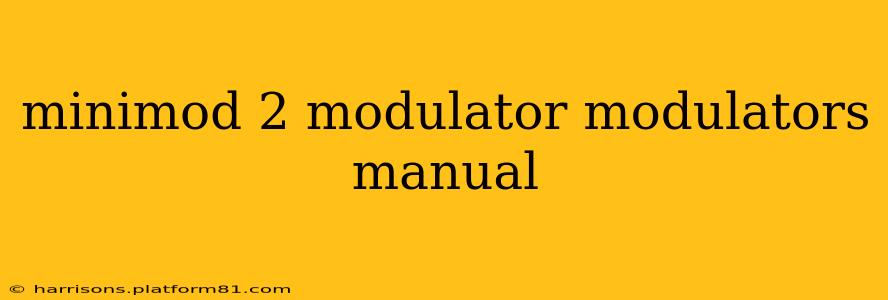The Minimoog Model D, a legendary synthesizer celebrated for its rich, warm sound, owes much of its sonic versatility to its powerful modulators. Understanding how these modulators function is key to unlocking the instrument's full potential. This guide will explore the Minimoog's modulation capabilities, answering common questions and providing practical tips for shaping your sound.
What are the different types of modulators on a Minimoog Model D?
The Minimoog Model D features three primary modulation sources: the low-frequency oscillator (LFO), the keyboard tracking generator (KTG), and the envelope generator (EG). Each contributes uniquely to the dynamic shaping of the sound.
-
LFO (Low-Frequency Oscillator): This produces cyclical waveforms (sine, triangle, square, sawtooth) at sub-audio frequencies, creating vibrato, tremolo, and other subtle or dramatic effects. Its rate controls the speed of the modulation, and the waveform shape affects the character of the modulation.
-
KTG (Keyboard Tracking Generator): This modulator links the pitch of the note played to the amount of modulation applied. This is crucial for creating portamento effects and pitch-bend responsiveness. The degree of tracking determines how much the modulation changes with the played notes.
-
EG (Envelope Generator): This responds to the playing of a note, creating a dynamic curve of modulation. The attack, decay, sustain, and release (ADSR) stages of the envelope determine how the modulation evolves over time. The EG is often used to modulate filter cutoff for dynamic sound changes.
How does the Minimoog's modulation matrix work?
The Minimoog doesn't have a traditional modulation matrix in the same way as some modern synths. Instead, it uses a more direct approach. Each modulator (LFO, KTG, EG) can be assigned to modulate the pitch and/or the filter cutoff frequency. The amount of modulation is controlled by dedicated knobs for each destination. This direct routing allows for intuitive sound design.
Can I modulate the VCA (volume) on the Minimoog Model D?
No, the Minimoog Model D's VCA (Voltage Controlled Amplifier) cannot be directly modulated by the LFO, KTG, or EG. While you can't directly modulate the volume with these sources, clever use of the filter cutoff and resonance in conjunction with the envelope generator can create a dynamic volume-like effect. A lower cutoff can effectively reduce the volume.
What are some common Minimoog modulation techniques?
The possibilities are endless, but here are some common and effective techniques:
-
Vibrato: Use the LFO to modulate pitch. Experiment with different LFO waveforms and rates to achieve various vibrato effects.
-
Tremolo: Use the LFO to modulate the filter cutoff, creating a pulsating volume effect. The filter resonance will significantly impact the character of the tremolo.
-
Filter sweeps: Use the EG to modulate the filter cutoff, creating dynamic soundscapes. Fast attack and decay times create sharp filter sweeps, while slower times create smoother transitions.
-
Portamento: The KTG is essential for portamento. By adjusting the KTG amount, you can control how smoothly the pitch transitions between notes.
How can I learn more about advanced Minimoog modulation techniques?
Exploring the Minimoog's modulation capabilities is a journey of experimentation. Start by experimenting with the basic techniques described above, then gradually increase the complexity. Online tutorials, YouTube videos, and dedicated Minimoog forums are excellent resources for further learning. Consider studying the sound design approaches of renowned Minimoog artists to gain inspiration and new ideas. Reading the Minimoog Model D service manual can offer detailed insights into the synth's internal workings and modulation circuitry.
This exploration of the Minimoog Model D's modulators provides a strong foundation for understanding and mastering its sound design capabilities. Remember, the key is experimentation and exploration to unlock the full sonic potential of this legendary instrument.
